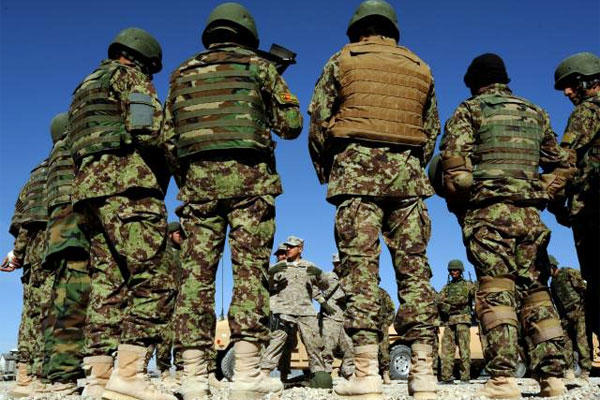The Taliban has taken over "some" districts in Afghanistan's flashpoint Helmand province as Afghanistan National Army (ANA) units struggle against their own corrupt leadership and desertions in the ranks, a U.S. military spokesman in Kabul said Tuesday.
The fight in Helmand, center of the poppy and heroin trade and a main source of funding for the Taliban, has resulted in the loss of several areas to the enemy but Army Brig. Gen. Wilson A. Shoffner repeatedly declined to name them.
When asked several times where the lost districts were, Shoffner said it was "hard to specify exactly how many at any given time. But there are some that -- where the Taliban have control."
"Again, those districts that we're talking about, things change rapidly. And I'll leave it that they are contested. It's difficult to pin down an exact number that are under Taliban control at any given time. They do go back and forth," Shoffner said.
Earlier, Shoffner had been specific in discussing Afghanistan as a whole. "Afghanistan has 404 districts in total. We assess that right now, the Taliban have control of only nine of those districts. We assess they have influence in about 17 others."
In Helmand, "the area in and around Marjah remains a contested area, and that's as far as I'll go there," said Shoffner, deputy chief of communications for NATO's Resolute Support mission in Afghanistan and main spokesman for Army Gen. John Campbell, the U.S. Forces-Afghanistan commander.
Marjah in central Helmand was the focal point of the U.S. Marine offensive in 2010 that took back control of the area from the Taliban. Marjah was also the scene earlier this month of the battle in which Army Staff Sgt. Matthew Q. McClintock was killed as a U.S. Special Forces team went to the aid of Afghan forces.
In a video briefing to the Pentagon from Kabul, Shoffner said efforts to counter the Taliban's offensive in Helmand, which began last October, have been hampered by the poor morale and leadership of the ANA's 215th Corps, the main unit in the province.
"I can tell you that in the 215th Corps, the corps commander has been switched out, two of the brigade commanders in the 215th Corps have been changed out, as have several members, key members, of the staff," Shoffner said.
As for the previous leaders of the 215th Corps, Shoffner said "we had some individuals who were corrupt" in how they handled pay for the troops and equipment.
In discussing the 215th Corps, Shoffner ran through a litany of organizational, equipment and leadership problems that U.S. advisers have been attempting to address within the ANA since the U.S. entered Afghanistan in force in late 2001.
In the 215th Corps, "they had problems with equipment maintenance. They had problems with units that had been attrited. They had problems with poor leadership. What we have found when units have an issue with attrition, it typically is traced back to poor leadership," Shoffner said. Overall, the ANA was short about 25,000 troops because of desertions, he said.
"These are important changes, and those new leaders are still going through the process of establishing themselves," Shoffner said of the 215th Corps.
Overall in 2015, the first year in which the ANA was on its own in the fight against the Taliban, the ANA had "mixed results" in its operations, Shoffner said.
The ANA did "fairly well" in operations that were planned beforehand, but had difficulty in responding quickly to a crisis, he said.
-- Richard Sisk can be reached at richard.sisk@military.com.





























